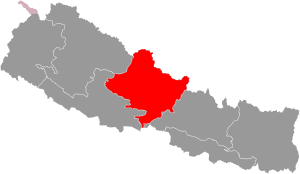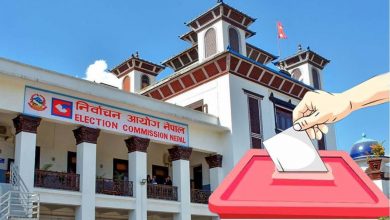Opinion: Nepal’s financial sector sees significant reforms, focus shifting to financial consolidation
– Maha Prasad Adhikari Kathmandu, Sept 13 (RSS): The global economic situation continues to recover slowly and unevenly from the shocks of the COVID-19 pandemic and subsequent geopolitical tensions.
Many central banks are still maintaining their tight monetary policy stance to manage the inflation. The interconnectedness of global markets needs policy harmonization to mitigate impact of global shocks on economic activity. A strong domestic financial system and robust institutional and policy framework is necessary to withstand external shocks, whether they stem from global financial crises, trade disruptions, or geopolitical tensions. Undergone significant reforms Nepal’s financial sector has undergone significant reforms, particularly during the three distinct phases.
The first phase of reform, initiated in the mid-1980s, focused on promoting institution, liberalizing the banking sector, and enhancing the range of financial services offered. The second phase of reform, starting in the early 2000s, concentrated on improving regulatory frameworks, strengthening financial stability, and enhancing the operational efficiency of financial institutions specially the PS banks. Post-2010, the focus shifted towards financial consolidation. This period saw efforts to merge and consolidate financial institutions to create stronger entities improving resiliency in to the system that is capable of withstanding economic shocks and contributing to sustainable economic growth.
Along with the financial reforms, NRB has also embarked on a journey of significant operational reforms in monetary policy. This operational reform has been gradual, with the introduction of the interest rate corridor in 2016/17 and shifting towards the interest rate targeting from the reserve targeting in 2020/21 and aimed at enhancing the effectiveness of the monetary policy transmission. We also introduced new instruments, such as a Standing Deposit Facility (SDF) in 2023/24 for effective implementation of IRC and effective liquidity management.
The recent policy reforms has been concentrated on modernizing the monetary policy operations, enhancing credit quality, emphasizing digital banking and FinTech, developing a modern payment system and its integration into the global market, and continuing the financial consolidation measures. Our focus is on better coordination between monetary and macroprudential policies. The Nepal Rastra Bank (NRB) has been putting efforts to chanelise credit toward productive sectors to ensure that the banking sector supports sustainable economic development and can reduce the risk of asset bubbles.
We have also been promoting financial inclusion as a Page 4 of 7 topmost priority encouraging MSME’s, enhancing access, literacy, and consumer protection measures on financial services. Despite a series of global and domestic shocks like the global financial crisis of 2008, and 2015 Devastating earthquake and the COVID-19 pandemic, Nepal’s financial system has shown resilience. The growth momentum of more than 7 percent observed after the 2015 earthquake was halted by the COVID-19 pandemic and the global supply shocks.
It is contracted from the historical average of 4.5 per cent to 1.9 per cent in 2022/23. The growth has now recovered to 3.9 percent in 2023/24. Specifically, the construction, manufacturing, and trade sectors were contracted in these two fiscal years. Nepal also witnessed rising consumer price inflation with 8.6 percent in September 2022. Because of the timely policy interventions, weak internal demand, and some improvement in the supply side, inflation has now come down to 3.6 percent in July 2024, with annual average inflation of 5.4 percent in 2023/24, well below the target of 6.5 percent.
Nepal faced a rapid decline in foreign exchange reserves during late 2021 till 2022. NRB pursued a tighter monetary policy stance to preserve the reserve from further depletion. The Central Bank continued the higher interest rate policy regime for more than a year until May 2023, which has helped significantly to improve the external sector and also to contain inflation. To address the debt distress and protect small and medium-scale enterprises as a result of higher interest rates, we introduced some regulatory relaxation, loan rescheduling, and re-classification, among others.
At the same time, we continued reforms introducing the working capital guideline for standardizing the credit need assessments of corporate sectors. The external sector is in relatively comfortable position, with balance of payment and current account surplus, adequate FOREX reserve with import capacity of 13.7 months in July 2024. The interest rate has been declining, with the weighted average lending rate of commercial banks down to a single digit. Some challenges and way forward for financial system With the balancing measures, we have been able to safeguard the overall macroeconomic stability.
Now, the key challenge is sluggish credit demand despite the lowered interest rate and adequate liquidity in the banking system. Moreover, the decline in credit expansion despite lower interest rates highlights a concerted effort to stimulate domestic demand in the real sector and boost domestic economic activity. Nepal is currently facing challenge in its economic landscape characterized by low growth, low savings, and low investment. In this context, monetary policy is expected by other stakeholder to act beyond its mandate without considering its limitations.
Nepal’s financial system has also been overloaded with structural issues, including the poorly developed insurance and capital market, especially the bond market. Another emerging issue due to technological advancement and fintech in to the financial system is strengthening cyber security, protecting from scams and data breaches, on the eve of on-going financial digitalization. We have made substantial progress in digital payments and settlements, at the same time we need further work to ensure consumer protection and safety.
Likewise, we are working further on interoperability on domestic and cross border payments and settlements. We are also studying new prospects like central bank digital currencies to cope with the digital era enhancing inclusion and monetary transmission effectiveness. To summarize, the path ahead for us is addressing the challenges while maximizing the opportunities we have in the monetary and financial sectors.
By maintaining a balanced approach to monetary policy, enhancing regulatory frameworks, continued reform and fostering financial inclusion, we aim to navigate the complexities of the financial landscape while ensuring sustainable and inclusive growth.
[The writer is the Governor of Nepal Rastra Bank (NRB), the central bank of the country.] —RSS









Comments